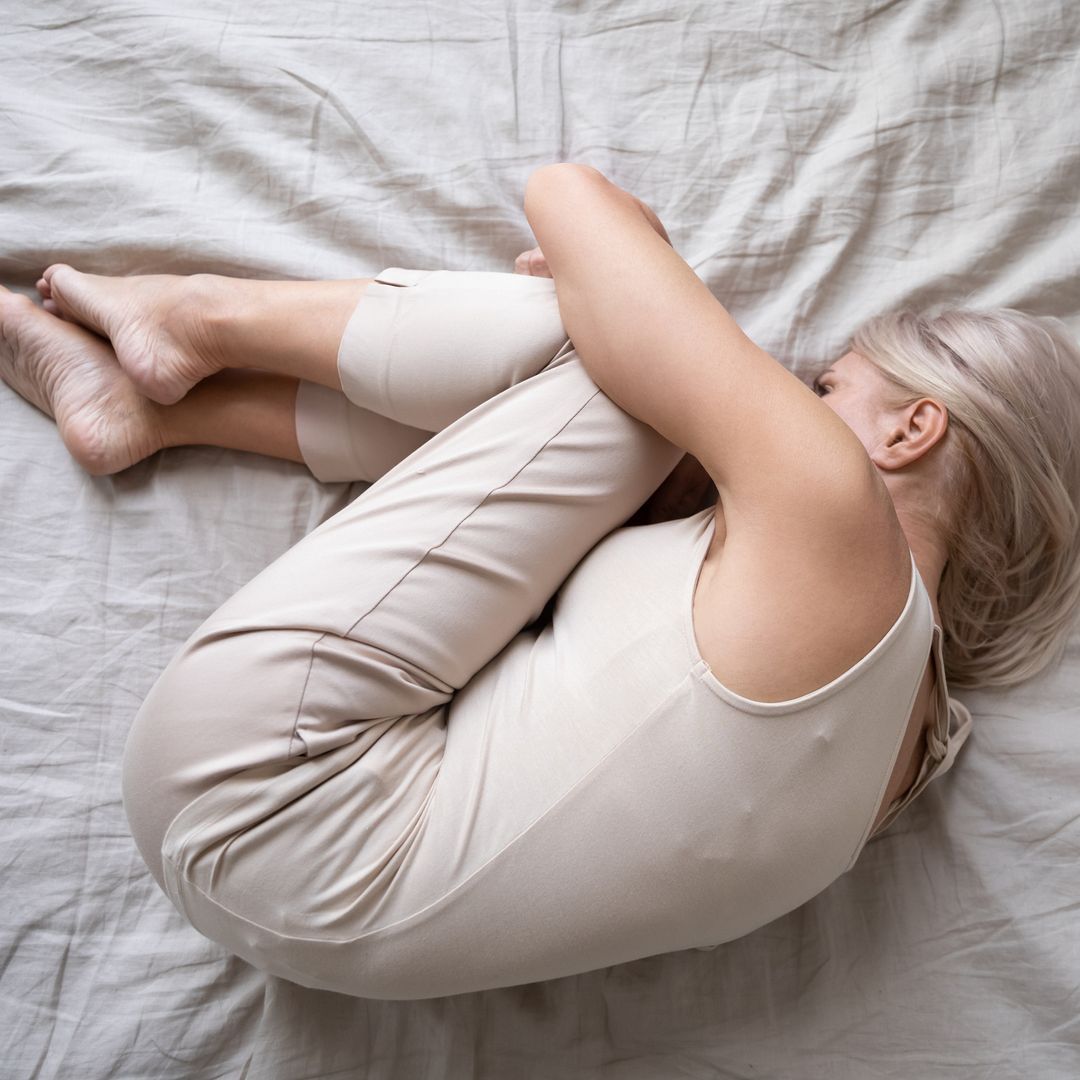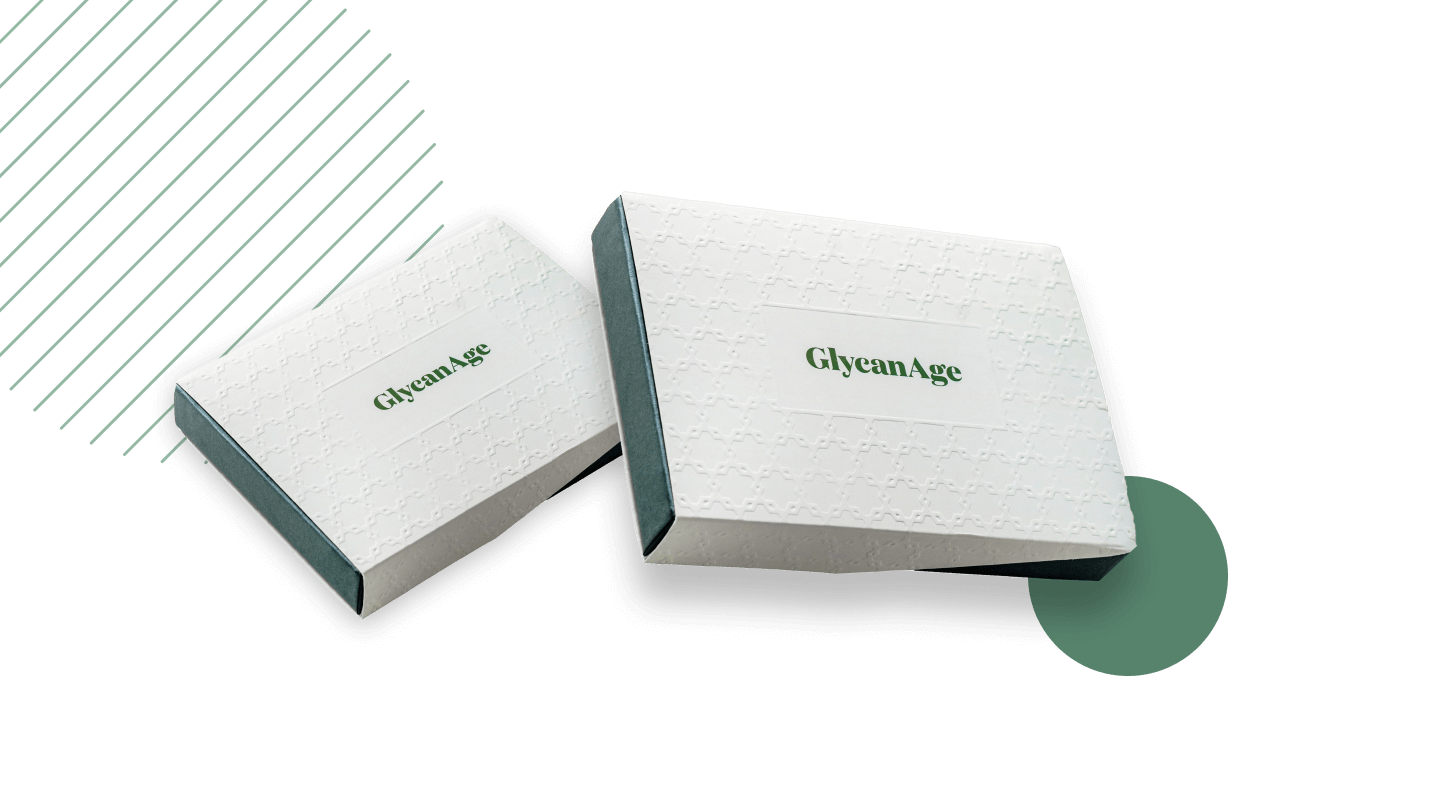The Signs Perimenopause is Ending

What are the first signs of perimenopause? What are the signs perimenopause is ending? Learn how long you can expect perimenopause to last before entering the next stage of menopause.
Summary
- Perimenopause is discussed even less than menopause, which is a shame since an average perimenopause can last between two to ten years. It's caused by the ovaries - they start producing less oestrogen as the body prepares to stop releasing eggs.
- The first signs of perimenopause will differ for every woman and tend to start around mid-40s.
- Oestrogen has three different forms: estradiol (the strongest), estrone and estriol. They are essential for the reproductive process and help regulate functions in other parts of the body, including the brain and central nervous system, as well as bones, liver and urinary tract. The ovaries produce the majority of the oestrogens in the body, but they can also be formed by other tissues, such as skin, muscle and body fat.
- There are two stages of perimenopause. The early stage is marked by the changes in menstrual flow and the length of cycles, while the late stage is the transition to menopause.
- Your body may start to show signs that perimenopause is ending during the last few years. Some symptoms may become worse (such as hot flashes and sleep), while others have a tendency to improve (including headaches and mood). Once there has been no period for 12 months (including spotting), perimenopause has officially ended, and you have reached menopause.
Introduction
Perimenopause is a process in which your body prepares for menopause. It marks the time when your ovaries gradually stop working. By this, we mean that your ovaries start producing less oestrogen, as the body prepares to stop releasing eggs.
The first signs of perimenopause usually start once women enter their mid-40s, but they can start earlier.
Although this is a natural progression in a woman's reproductive cycle, perimenopause symptoms can be challenging to manage, because they can severely impact their quality of life. That's why you need to gain a good understanding of what you can expect during this time.
What is perimenopause?
Menopause only gets diagnosed once you go a full year without menstruation. The period before is called the perimenopause.
During perimenopause, women often experience irregular and sometimes heavy periods. This means that you can still get pregnant during your perimenopause.
However, there are similarities between menopause and perimenopause - symptoms such as hot flushes, mood swings and such. The variety and severity of these symptoms can depend a lot on the individual. Some women may experience all symptoms, while others only 2.
When does perimenopause start?

Two major female hormones are produced by the ovaries – oestrogen and progesterone. During perimenopause, the production of these hormones declines and fluctuates until it eventually stops. While menopause is associated with a change women go through during their late 40s and 50s, perimenopause can begin in their early 40s or 30s (especially for those who smoke, as Italian researchers have reported from the University of Naples Federico II). This makes it hard to determine what age you can expect to start perimenopause.
Perimenopause is described by the decline in the amount of oestrogen your body produces. Oestrogen has three different forms:
- Estradiol (the strongest form)
- Estrone
- Estriol
The ovaries produce the majority of the oestrogens in the body, but they can also be formed by other tissues, such as skin, muscle and body fat. These oestrogens are essential for the reproductive process and also play a vital role in regulating functions of other parts of the body, including the brain and central nervous system, bones, liver and urinary tract.
There are over 30 perimenopause symptoms which can affect women differently and occur at different stages. So many women will wonder, what are the first signs of perimenopause? Unfortunately, this is not the same for every woman, so you must be aware of various possible signs. You might experience any of the following:
- Irregular periods
- Hot flashes
- Sleep problems
- Heart palpitations
- Mood changes
- Reduced sex drive
- Migraines
- Changes in cholesterol levels
- Weight gain
- Loss of bone density
Even with all of these symptoms, it can still be challenging to pinpoint when perimenopause starts. A popular method of diagnosing perimenopause is a hormone test, better known as an FSH test. FSH stands for follicle-stimulating hormone (FSH), which controls the menstrual cycle.
In order to diagnose menopause, the test has to detect FSH levels of 30 mIU/mL or higher.
However, FSH tests are not always reliable. During perimenopause, your oestrogen and FSH levels can fluctuate and a single reading of the FSH levels will not be enough to signify that you've entered menopause. If you're interested in a better menopause marker, read our article on the link between glycans and menopause.
What are the stages of perimenopause?

Menopause does not happen overnight, and the period of perimenopause will usually go on for a few years before the last menstrual cycle. It can be a drawn-out process filled with various symptoms as your ovaries begin producing fewer hormones, causing your menstrual cycle to become erratic or irregular.
Early Stage
Perimenopause can begin for some women in their 30s (known as early menopause), but for most, it starts in their mid-40s and 50s. This phase is marked by changes in menstrual flow and the length of the cycle. Some women also experience sudden surges in oestrogen.
Late Stage
The last stages of perimenopause tend to happen to women in their late 40s and 50s. During the last stages of the transition to menopause, women will begin to miss their periods until they eventually stop. In addition, estrogen levels will drastically drop around six months before menopause. This oestrogen reduction triggers a variety of symptoms, including hot flashes, sleep issues and weight gain.

What are the signs perimenopause is ending?
During the last few years of perimenopause, your body may start to show signs perimenopause is ending. Some symptoms can increase in severity and frequency during the last few years of your perimenopause cycle, while others may begin to ease and become less intrusive.
Time Between Periods
The length of time between periods will increase near the end of perimenopause until they stop altogether. If there are around 60 days or more between periods, it is a pretty strong sign that you are in late perimenopause.
Less Frequent Headaches
Wildly fluctuating hormones start to settle down to their new lower levels near the end of perimenopause, which can help ease those headaches. In addition, women suffering from menstrual migraines will notice the debilitating headaches are fewer and farther between as periods start to space out.
More Hot Flashes
Unfortunately, as perimenopause is nearing the end, the hot flashes may increase. When you are hot, your body reacts the same as when experiencing a hot flash. Your blood vessels dilate, and you will start to sweat to help cool down the skin. Oestrogen plays a role in body temperature control, so lowered hormone levels can cause the brain thermostat to malfunction.
Sleeping problems (insomnia)
With hot flashes, night sweats, hormonal fluxes and most likely increased anxiety, it can be tough to get a good night's sleep. In addition, due to the hormone fluctuations, women can have insomnia which starts at perimenopause and continues to be an issue through the menopause years.
Stable Mood
Here is some good news. The British Menopause Society reported that the challenging ups and downs which affect around 75% of women during perimenopause are likely to stabilise as we begin to enter menopause. This means that the mood swings won't last for a lifetime.
Vaginal dryness
Vaginal dryness is one of the most common symptoms of menopause, as well as one that has the tendency to linger. Luckily, there are a lot of different treatments you can choose from, such as moisturisers, tablets and more.
No two bodies are the same, even in the same families, so the age and rate of ovary function decline differ hugely. That's why answering the question - How long does perimenopause lasts? can be quite difficult. What we confirm is once you haven't had a menstrual cycle for 12 months (including spotting), your perimenopause has ended, and you have reached menopause.
Closing Thoughts
Menopause is a natural biological part of a woman's life cycle but can be challenging to manage. Gaining a greater understanding of what to expect from perimenopause can help women look after their bodies better.
Knowing how to take care of your body at any stage of life can allow you to age well and continue to live an active and fulfilled life well into your menopausal years. Instead of focusing on your chronological age, we encourage you to shift focus to your lifestyle.
This is an important step you should take no matter where in your menopause journey you might be. By optimising your diet, exercise, stress management and more, you can create a better foundation for future conditions. Start today by taking our test!
Frequently Asked Questions (FAQs)
How do you know when perimenopause ends?
You can tell that perimenopause is coming to an end as the time between periods will increase until they stop altogether. Once you notice around 60 days or more between menstrual cycles, it is likely a sign you are entering late perimenopause. Perimenopause stops once you have not had a period for a full 12 months (including any spotting).
What are the first stages of perimenopause?
For most women (but not all), the first stage of perimenopause is a change in your normal period pattern. Some women notice other symptoms, including changes in mood, headaches, reduced sex drive, problems sleeping and hot flushes.
What is the last stage of perimenopause?
The last stage of perimenopause tends to happen around the late 40s and 50s. During the last stages of perimenopause, you will begin to miss your periods more often, until they eventually stop.
Do perimenopause symptoms last all month?
Perimenopause symptoms can last for months or even years. For some women, it can be pretty constant, while for others, symptoms can disappear and then come back again. This can lead women to fall into a false sense of security, especially if they have been attempting to manage a particular perimenopause symptom, for it disappears and comes back with a vengeance a few weeks later.
What's worse, perimenopause or menopause?
There are three stages of menopause:
- Perimenopause – The time leading up to menopause
- Menopause – When you have stopped producing hormones that cause a period, and there has been no period for a year
- Postmenopause – The time after menopause has occurred
All stages come with challenges, but with a healthy lifestyle and focus on ageing well – life can be gratifying during the 30-plus years many women live postmenopause.
How can I stop perimenopause?
Perimenopause is a natural transitional period all women go through, and it is impossible to stop it. However, there are some things which have been found to accelerate the onset of menopause. Examples include smoking, excessive alcohol, lack of vitamin D and unhealthy diets.

.png?alt=media&token=a8db2c6f-ae6c-4d92-a5e1-66df4b1cbb56)

